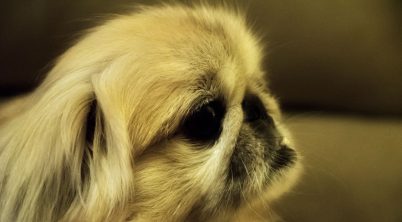Despite their diminutive size, Pekingese dogs carry a history steeped in the verve of Chinese imperial courts. Originally bred to adorn the laps of royalty, these regal canines are often perceived as lazy due to their love for relaxation and indoor living. However, this temperament finds its roots in a serene confidence rather than a lack of vitality.
Their long association with Chinese nobility has given Pekingese dogs a dignified and independent nature, which can sometimes be mistaken for aloofness. They exude a calm temperament that makes them suitable companions for those seeking a low-energy pet. Despite their leisurely disposition, Pekingese are not without spirit; they are alert, expressive, and can be quite assertive when they choose to be.
Characterized by a lion-like mane, flat face, and a stocky build, Pekingese dogs embody robustness in a compact form. Although they do not require extensive physical exercise, they are not inherently lazy. The Pekingese’s physical traits and composed temperament reflect its historical origins – a breed designed not for laborious tasks but for the serene and observant companionship suitable for the imperial environment it once graced.
Table of Contents
Understanding the Pekingese Lifestyle
Exploring the Pekingese lifestyle is essential to comprehending their unique nature. This section examines behavioral traits, activity levels, and how well they mesh with family life, alongside insights on training and common misconceptions.
Behavioral Traits
Pekingese dogs exhibit loyalty and affection, often forming strong bonds with their owners. They can be independent and opinionated, showing a stubborn streak that requires patience. Their roots in Chinese royalty contribute to a certain dignified demeanor.
Activity Levels
While they may seem sedate, Pekingese dogs do have an energetic side. They need daily exercise but tend to require less than more athletic breeds. Their activity should consider their brachycephalic nature, which affects breathing and health.
Pekingese and Families
These dogs are known to be affectionate with family members and can be good companions for all ages. However, they may not tolerate rough handling and benefit from socialization to thrive in a family environment.
House Training and Commands
Training a Pekingese requires consistency and understanding of their independent nature. They are intelligent but may resist due to stubbornness, so training should be firm yet gentle. These dogs can excel in learning commands when motivated properly.
Common Misconceptions
Pekingese are sometimes labeled lazy; however, this perception may stem from their calm demeanor. It’s crucial to distinguish between low energy and a relaxed approach to life. They are capable of being alert and make good watchdogs.
Finding the Right Fit
When considering a Pekingese, one should reach out to reputable breeders, animal shelters, or rescue groups. Proper health screenings and understanding the breed’s maintenance for their thick coat and grooming needs are critical. Adopting a Pekingese means committing to their care, from managing potential obesity to addressing health problems specific to the breed.
Conclusion
The nature of a Pekingese dog’s activity level is not inherently inclined towards laziness. They possess a demeanor that can be deemed as calm and composed, rather than energetic. It is essential to understand that while some Pekingese may enjoy leisurely activities, their behavior should not be misconstrued as laziness.
They require regular exercise to maintain their health and avoid weight gain, which is significant given their susceptibility to obesity. A daily routine that includes walks and playtime will cater to their physical needs and enrich their mental well-being.
Their history as companion dogs shapes their behavior, making them well-suited to a more relaxed lifestyle. They often match the energy levels of their living environment, showing versatility as pets. The Pekingese thrive on affection and return it in ample measures, making them excellent companions.
Owners should be mindful of the grooming needs of the Pekingese, as regular maintenance will help prevent health issues and foster a comfortable living condition for the dog. Their long coat needs consistent care, and their flat faces require owners to be vigilant for signs of breathing difficulties, especially during exercise.
In taking a proactive stance on their Pekingese’s health and wellbeing, owners will find that these dogs exhibit a balanced temperament, capable of both enjoying quiet time and engaging in moderate play.








